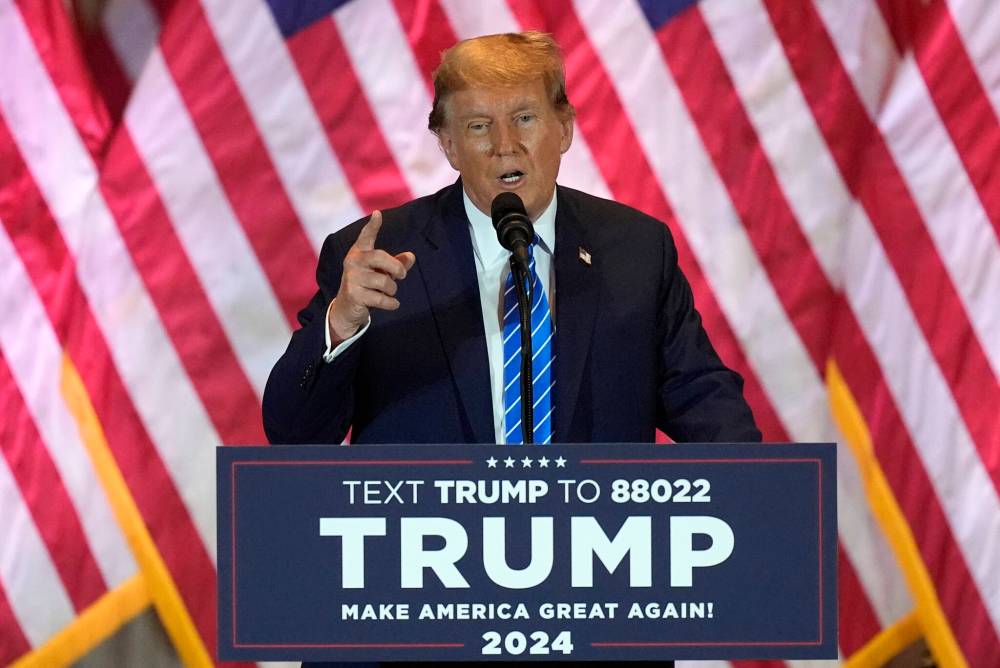The deliberate undermining of news
Advertisement
Read this article for free:
or
Already have an account? Log in here »
To continue reading, please subscribe:
Monthly Digital Subscription
$1 per week for 24 weeks*
- Enjoy unlimited reading on winnipegfreepress.com
- Read the E-Edition, our digital replica newspaper
- Access News Break, our award-winning app
- Play interactive puzzles
*Billed as $4.00 plus GST every four weeks. After 24 weeks, price increases to the regular rate of $19.00 plus GST every four weeks. Offer available to new and qualified returning subscribers only. Cancel any time.
Monthly Digital Subscription
$4.75/week*
- Enjoy unlimited reading on winnipegfreepress.com
- Read the E-Edition, our digital replica newspaper
- Access News Break, our award-winning app
- Play interactive puzzles
*Billed as $19 plus GST every four weeks. Cancel any time.
To continue reading, please subscribe:
Add Winnipeg Free Press access to your Brandon Sun subscription for only
$1 for the first 4 weeks*
*$1 will be added to your next bill. After your 4 weeks access is complete your rate will increase by $0.00 a X percent off the regular rate.
Read unlimited articles for free today:
or
Already have an account? Log in here »
Hey there, time traveller!
This article was published 28/03/2024 (552 days ago), so information in it may no longer be current.
“Fake news.”
Of all the information-inclined phrases that have entered the lexicon during the internet’s dizzying expansion in the first decades of the 21st century, this ostensibly throwaway two-word epithet surely ranks among the most confounding.
Abruptly concise and seemingly simple in its structure, “fake news” — which once straighforwardly described information, often concocted with mischief in mind, that is factually incorrect — has been appropriated, subverted and weaponized in such a manner that it now stands as an embodiment of attitudes and agendas that have contributed to the ongoing disintegration of civil society.

Former President and Republican presidential candidate Donald Trump successfully launched the mantra of “fake news” in 2016. (Rebecca Blackwell / The Associated Press files)
The phrase was employed with ruthless efficiency by then-candidate Donald Trump during his ultimately successful 2016 pursuit of the U.S. presidency. On an almost-daily basis, Trump would disparage as “fake news” any outlet critical of him or his campaign, strategically seeking to erode the credibility of anyone or anything that challenged his authority.
When asked, after the 2016 election, by 60 Minutes correspondent Leslie Stahl why he continued his tiresome trend of attacking the media, Trump’s response was blunt: “You know why I do it? I do it to discredit you all and demean you all so when you write negative stories about me, no one will believe you.”
To say the strategy was successful would be an understatement of epic proportions. Trump’s targeting of traditional news media came at the same time he deftly harnessed the burgeoning power of social media, effectively spreading his fake-news gospel to tens of millions of Twitter followers.
And at the same time Trump and his acolytes were successfully undermining the credibility of legitimate media, alternative outlets that traffick in deliberate misinformation became immensely powerful and lucrative. Fake news had become both a mantra and a machine.
And the ever-expanding internet’s splintering of the information ecosystem created countless subsections of society, each with its own set of “facts” tailor-made to fuel long-simmering grievances, propel conspiracy theories and embolden fringe factions to emerge from their online enclaves and take their fury to the mainstream.
The Jan. 6, 2021 insurrection at the U.S. Capitol was a direct result of the proliferation of online conspiracy theories and hatred, fomented by Trump’s false claims of a stolen election and exhortations for his followers to “fight like hell … (or) you’re not going to have a country anymore.”
In Canada, the catalyst for the so-called Freedom Convoy that disrupted downtowns and blocked border crossings in 2022 lay in the anti-vaccine and anti-government echo chambers that arose in response to restrictions imposed in an effort to limit the spread of COVID-19.

In the aftermath, online hate, conspiracy theories and even threats of violence against politicians and other public figure have become increasingly commonplace — so much so that a report prepared by a federal task force charged with safeguarding Canada’s elections concluded that threats against politicians have become “increasingly normalized” in an online environment in which conspiracy theories abound, viewpoints are toxically polarized and trust in the integrity of the state has been severely eroded.
The question, then, is what do we as Canadians do?
At the individual level, it’s a matter of choice. The most toxic traits of the internet have become what amounts to an unsolvable problem, so it’s up to each of us to understand the dangers and prudently consider the sources of the information we consume.
And for those who aspire to positions of leadership in this increasingly complex society, the obligation is clear: your job is to protect us from the darkness that resides online, not to pander to its most nefarious elements in pursuit of personal and political advancement.






